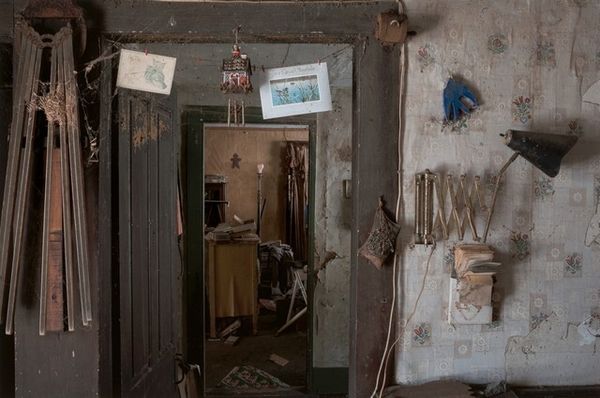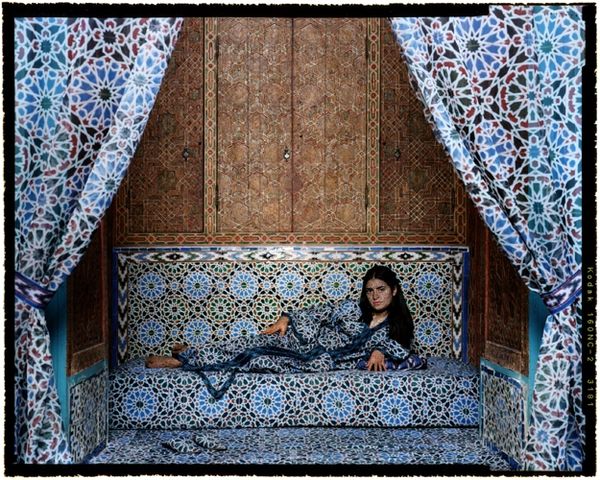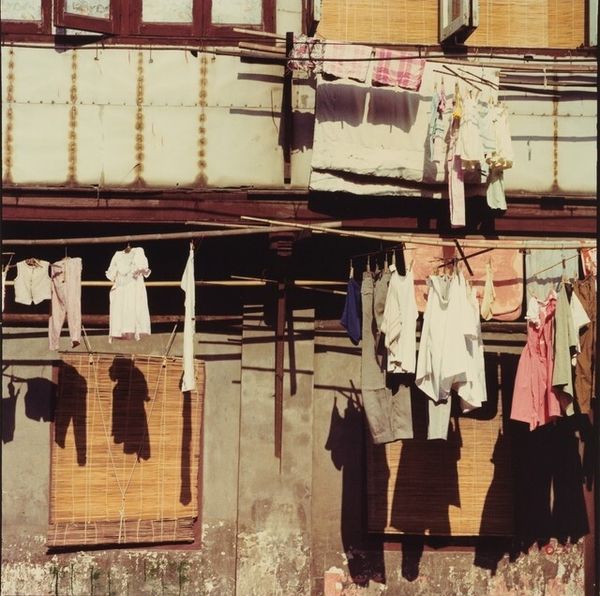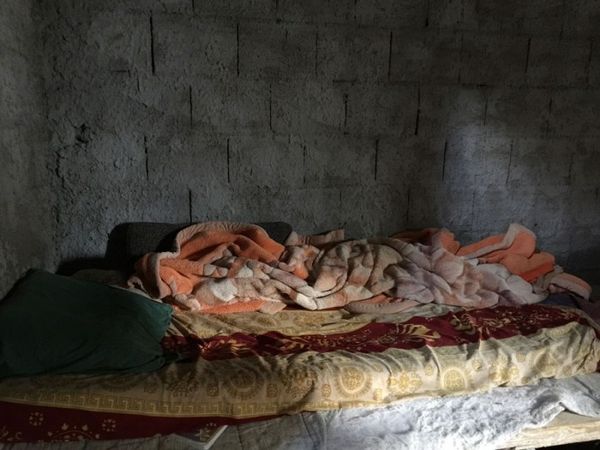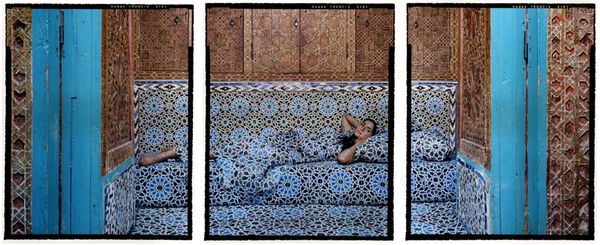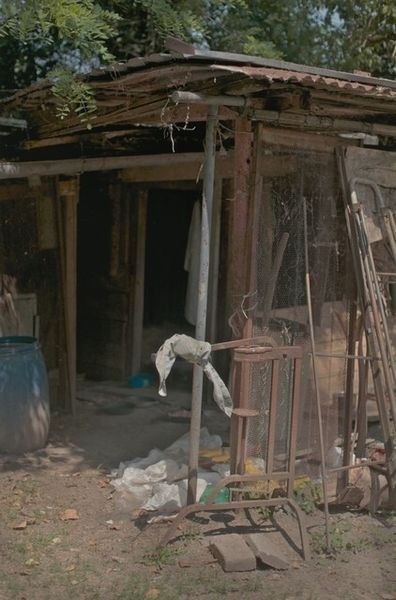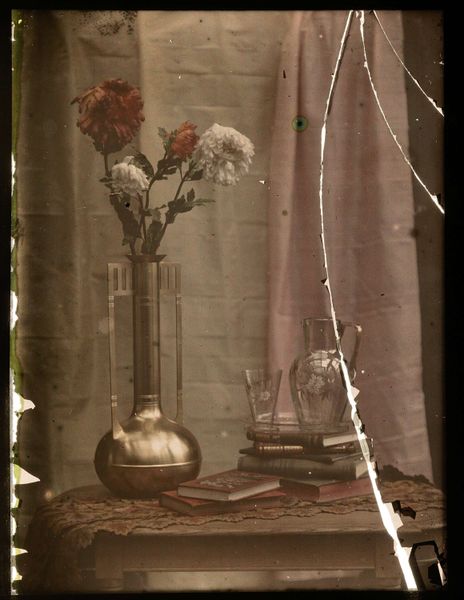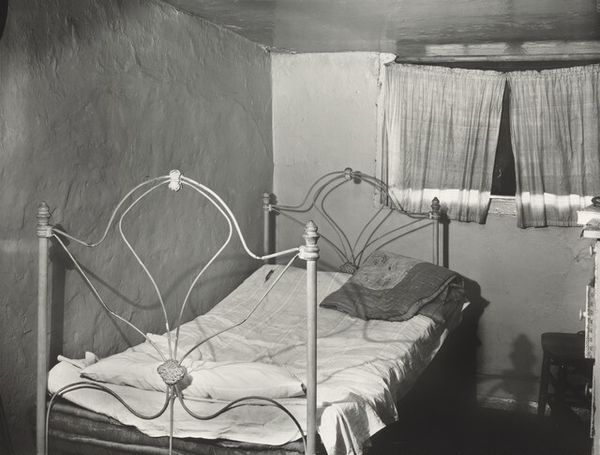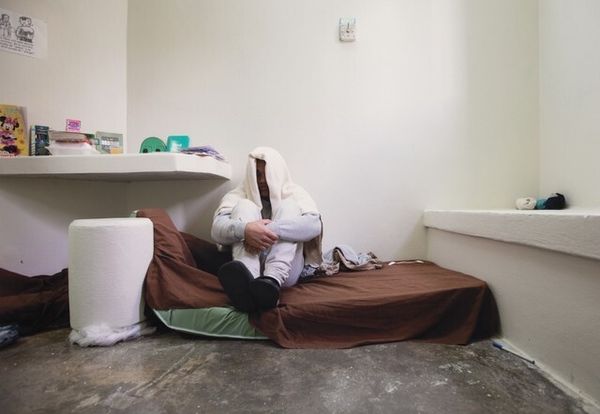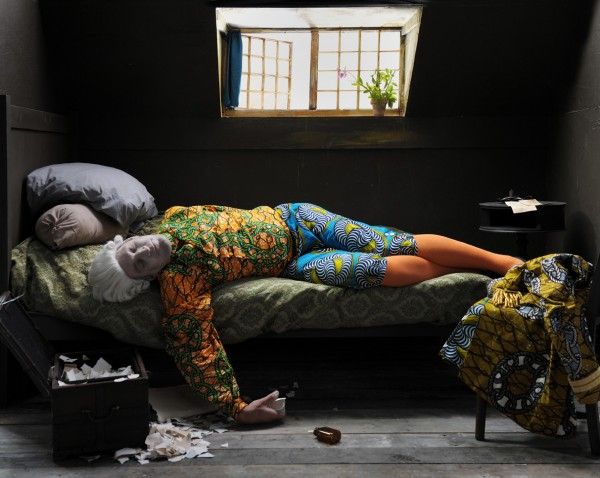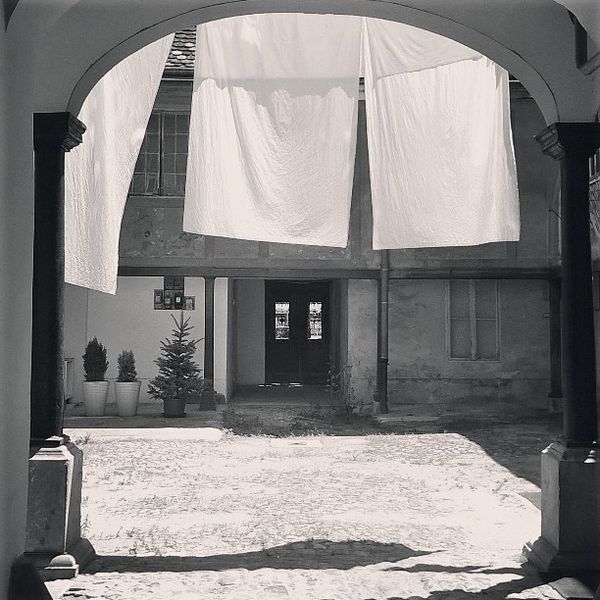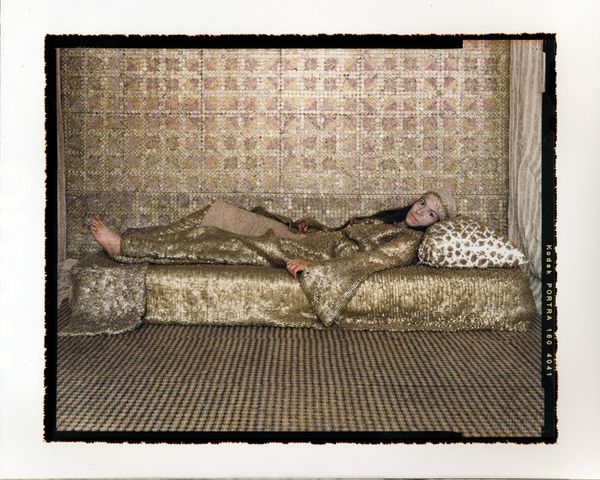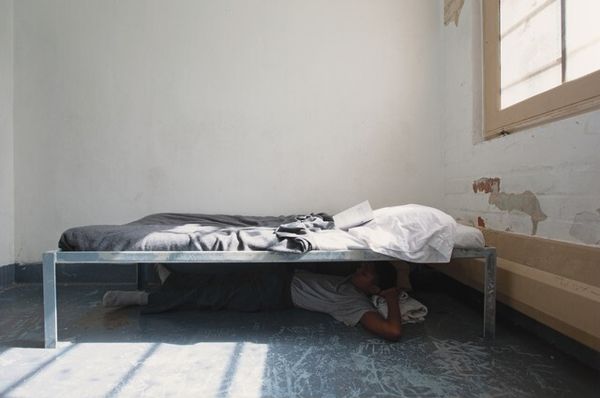
c-print, photography
#
portrait
#
c-print
#
social-realism
#
street-photography
#
photography
Dimensions: image (each): 47 × 59.7 cm (18 1/2 × 23 1/2 in.) overall size: 69.9 × 239.1 × 3.8 cm (27 1/2 × 94 1/8 × 1 1/2 in.)
Copyright: National Gallery of Art: CC0 1.0
Curator: This photographic work is by Jim Goldberg, it's called "Roma Camp, Greece" and was created in 2003. It is a C-print. Editor: At first glance, it presents such a striking juxtaposition. We see three images side-by-side which immediately invoke themes of shelter and temporality. There is a vulnerability on display. Curator: Goldberg is well-known for his commitment to social realism, so, his exploration of marginalized communities shouldn't come as a surprise to his followers. Here, he draws our attention to the living conditions of Roma people in Greece. The composition is crucial: the triptych form divides a sense of home in 3, doesn't resolve it. Editor: Absolutely. Breaking it down panel by panel...on the left, the dwelling looks rather exposed, a concrete wall topped with tattered cloth. In the centre, floral fabric and pallets create what appears to be an interior of sorts and finally, on the right, a draped area with a television suggests someone resides in that section. But none provide any protection from the elements. I can only imagine the dust, the cold in winter... Curator: These material choices speak volumes about resilience and resourcefulness in the face of systemic challenges. How communities adapt and create space for living through a limited agency fascinates me and what these pictures provide us with is access. Goldberg worked closely with the people portrayed, building relationships, and that level of immersion translates through each frame. Editor: And the layering is also significant; both literally, as with the layered fabric, but also metaphorically with the layered identities and the complex historical narrative attached to the Roma community across Europe. Curator: Precisely. Goldberg compels us to reflect on the historical and ongoing displacement experienced by the community as a result of racial injustice, class divisions and failed socio-political integration strategies. I agree that it's far from a straight documentary depiction, but more like a call for empathy, showing both poverty and dignity. Editor: It reminds us that these aren't abstract issues, these are spaces people call home, filled with everyday needs, with dreams. Goldberg is really driving home the notion that even within marginalization, humanity endures. It demands we question our own role in perpetuating or challenging those realities. Curator: Looking at Goldberg's work through an historical lens only emphasizes how persistent the challenges faced by marginalized groups really are. I find myself grateful that artists exist that are keen to portray inequality through socially driven campaigns. Editor: I see the ability of art to confront hard realities and in Goldberg's "Roma Camp, Greece," we find not only an image of struggle, but hopefully, a reason to insist on societal transformation.
Comments
No comments
Be the first to comment and join the conversation on the ultimate creative platform.
